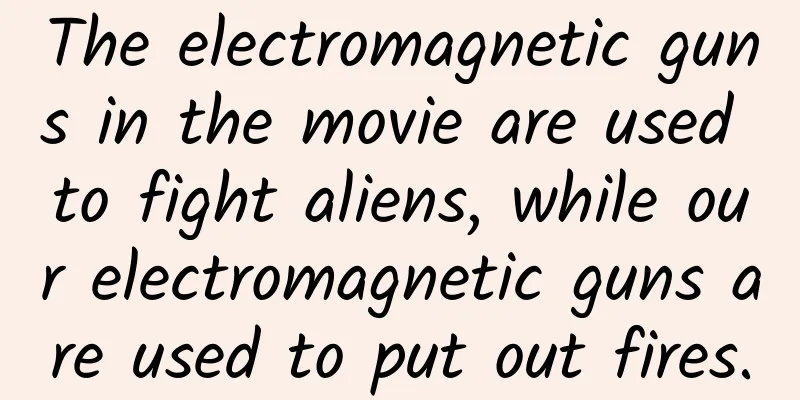VR Chronicles: What did VR devices look like 50 years ago?

|
Although the VR field has only started to flourish in recent years with the influx of capital, it is shocking that the birth of VR devices dates back to decades ago, and various VR devices have been launched since the concept of VR was born. Although for various reasons, these VR pioneers did not stand the test of the market and ended in failure, without them, there would not be such a prosperous VR market today. Today, let's review the "martyrs" in the VR industry.
The Age of Chaos (1930s) As early as 1935, when there were no computers, an American science fiction writer described the concept of VR equipment, but it was just a novel after all, and for the literary and artistic circles with wild imaginations, this writer did not seem to be worthy of the title of the founder of VR. However, it can be seen that since then, people have had a yearning for the virtual world.
American science fiction writer Stanley G. Weinbaum first described VR in his work Ancient times (1950s-1970s) After World War II, as the international climate became more peaceful and stable, the entertainment industry has made great progress. Virtual reality, which was regarded as a fantasy in science fiction 20 years ago, became a reality in the 1950s. Sensorama, invented by American Morton Heilig, was launched in 1957. It achieves the effect of virtual reality by giving the audience multi-sensory stimulation of vision, hearing, and even smell and touch. It is therefore called the prototype of VR equipment. Of course, before the advent of the transistor era, this machine could only be realized entirely through mechanical structures. Users watch 3D films, and the seats are linked to the screen using complex transmission mechanisms. Sensorama has 3D images, stereo sound effects, simulated wind and taste stimulation, and even the seats are movable. However, the speed of technological development always exceeds people's imagination. A few years later, in 1968, the world's first head-mounted virtual reality device was born! Structurally, it is also surprisingly similar to various VR products today. It has all the characteristics of VR, including head-mounted design, two screens to provide images for both eyes to achieve 3D effects, and images calculated in real time based on motion analysis. Although it can only output extremely simple electron beam graphics, as a technology 50 years ago, it can be regarded as an epoch-making invention. The most interesting thing is that the whole set of equipment is fixed to the ceiling by a connecting rod, so it has a very vivid name-the Sword of Damocles (the Sword of Damocles comes from ancient Greek legends, and the original meaning is a sword hanging high above the head tied to the ceiling with a horsehair).
Ivan Sutherland, the inventor of the Sword of Damocles, uses the device. The connecting rods on the ceiling can be seen.
The Sword of Damocles will generate a cube like this in the screen. Strictly speaking, it is an AR device. In the 1950s and 1970s of the last century, the concept of VR was just taking shape and VR devices were in their infancy. VR technology continues to explore and advance The embryonic era (1980s-1990s) After entering the 1980s, integrated circuits began to be widely used, and the advent of Intel x86 processors and Microsoft MS-DOS systems made PCs popular in thousands of households. At the same time, the improvement of hardware functions brought about by technological progress also greatly enhanced image processing capabilities. It can be said that it was not until this time that VR devices really had the possibility of being practical. VR equipment developed by NASA It was also from the 1980s that many VR products came out, from NASA to independent inventors in garages, who began to develop VR equipment. Unfortunately, perhaps because the technology at that time could not perfectly present the form of VR, most of these products were eliminated by the market, and some products died before they were mass-produced. One of the more famous products is the Virtual Boy virtual reality game console launched by Nintendo. Nintendo Virtual Boy was the first game console to use VR as a selling point, 20 years earlier than PS VR. At that time, Nintendo was at its peak. The unprecedented global success of FC and SFC made Nintendo firmly sit on the throne of console games. Unlike the conservative impression of Nintendo now, Nintendo was very radical in both hardware design and marketing strategy at that time, and even adopted some advanced technologies in game consoles. The Virtual Boy was a game console that was too advanced for its time. Due to the limited skills at the time, the 3D effect of this game console was presented in red and blue. As for the color difference caused by red and blue 3D, Virtual Boy did not have such worries, because it did not even support color pictures! At the same time, Virtual Boy did not have a motion tracking system. All players could do was to stand the game console on the table with a stand and then put their heads close to it to see the black and red pictures. Moreover, due to the constraints of the picture effect, not only was the immersion of simulated reality very poor, but even the comfort could not be guaranteed. Therefore, it was also coldly received by the market, with global sales of only 770,000 units and only 22 exclusive games. This most cutting-edge game console in Nintendo's history ended in a dismal failure less than a year after its release, and it can be said to be Nintendo's most failed game console. Nintendo's veteran Gunpei Yokoi also resigned. It is no exaggeration to say that the failure of Virtual Boy also started the process of Nintendo's decline.
Players need to lean over the Virtual Boy helmet to play the game, which is obviously not comfortable enough. An interesting thing is that although Virtual Boy can only be played on the desktop, it is actually a handheld game console. As its name suggests, Virtual Boy is actually the successor of Game Boy. In fact, Nintendo also developed Virtual Boy as a head-mounted device similar to modern VR when it was first designed. However, because Nintendo's then president Hiroshi Yamauchi was eager to bring it to the market, he ignored the designer's objections and put the immature Virtual Boy on the market. If Mr. Yamauchi had asked Nintendo to wait a little longer for its players, perhaps a Virtual Boy that was not so weird could once again change the fate of Nintendo and even the gaming industry.
Today, such a scene can be described as "horrifying". The maturing VR industry Golden Age (2012 to present) Perhaps the Virtual Boy experience seriously affected people's impression of VR. For a long time after the failure of Virtual Boy, there were no truly large-scale mass-produced VR products on the market. Even similar head-mounted display devices mostly did not dare to call themselves "VR". It wasn't until 2012 that a grassroots team came out to save the world. Like almost all grassroots teams, the founder of this project has shown a strong interest in mechanical and electronic products since childhood, and tried to tinker with various novel gadgets in his garage at home. After a period of exploration and practice, he became curious about VR, but he found that the various head-mounted display devices he collected could not satisfy him - so he did it himself! The final product was the Oculus Rift, which was a huge hit on Kickstarter and a commercial miracle. Oculus Rift will support Xbox One controllers The prototype of Rift can be traced back to 2009, but its competitor Sony obviously has a longer-term layout. As early as 1997, Sony, which was at its peak at the time, launched a head-mounted display device called Glasstron. This gadget, which used the most advanced technology at the time, was full of 90s sci-fi style. In comparison, its successor, the more famous HMZ series head-mounted display, looks very similar to the current PS VR.
Sony Glasstron has a very cool wearing effect If Oculus brought new life to this long-dormant market, then Google completely ignited the fire of VR. The Cardboard released at the 2015 Google Developer Conference was undoubtedly revolutionary both in terms of the product itself and the sales method. To this day, 99% of domestic VR devices are still making micro-innovations based on Cardboard. As for the core gameplay, it is exactly the same as Google's. It can be said that as of today, considering the comprehensive consideration of experience and content, the VR devices with the greatest development potential are still those from Oculus, Sony and HTC. It cannot be said that Chinese people have no chance in the VR field, but to achieve overtaking, they must first get rid of the capital bubble and achieve world-class product standards. Sony PS VR and HMZ display are obviously related |
<<: Mobile game startup review: Why did the company fail 3 and a half years after its establishment?
>>: [Tencent Bugly Tips] Canvas Particle Engine Hands-on Tutorial to Impress Leaders and Users
Recommend
I bet you have never seen these colorful cicadas!
In addition to sweat and high temperatures, the s...
Galaxy S6 aluminum body first exposed: metal is popular
Galaxy S6 has been exposed frequently recently. I...
28 essential tools for new media operations in 2021!
What tools are needed for a complete campaign? On...
I got on a Spring Festival travel train that distorted time and space?!
1 Strange things happened on the train A while ag...
Pinduoduo’s part-time courses can earn you an extra 5,000+ yuan per month, all with your mobile phone!
Pinduoduo's part-time courses can earn you mo...
A brief history of glasses: What did the ancients do if they were nearsighted?
Zhao Xigu of the Southern Song Dynasty wrote in h...
What to do if iPhone message reception is delayed? In fact, changing the time zone will eliminate the delay, which is very practical
Have you ever encountered this situation when usi...
Android 13 will use the read-only file system developed by Huawei by default
According to a recent report by Esper, the latest...
It’s hard to imagine that the principles of perming hair and steaming buns are the same?
The Spring Festival is coming soon. For many peop...
The EU officially launched an anti-subsidy investigation into Chinese electric vehicles, but the most panicked are BMW, Mercedes-Benz and Audi
Recently, the European Union officially decided t...
China Automobile Dealers Association: Survey on the Survival Status of National Automobile Dealers in the First Half of 2022
On August 1, 2022 , the China Automobile Dealers ...
Apple Dad’s 10 Marketing Skills That Won the “Outstanding Marketing Award”!
In the CMO Survey of global marketing executives,...
He was the "last man who knew everything" and died at the age of 55
This article is the preface written by Royal Astr...
How to play Douyin shop: One article explains in detail how to play small shop with no source, small shop group, and self-broadcasting!
When playing Douyin store , there are ways to pla...
Why can pigeons return to their homes no matter where they fly?
Audit expert: Zhao Liangyu Associate Professor, S...









![28 lessons on Douyin operation tutorial, 28 lessons video tutorial required to become a millionaire online celebrity [full version]](/upload/images/67cc4f49e74df.webp)